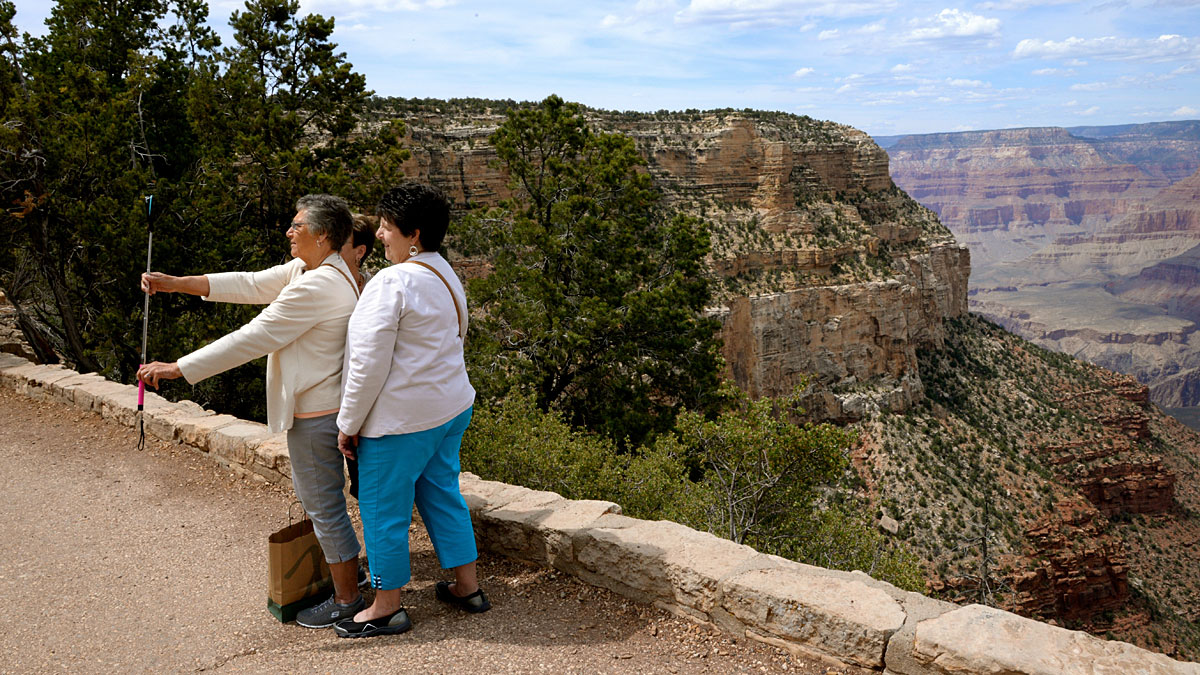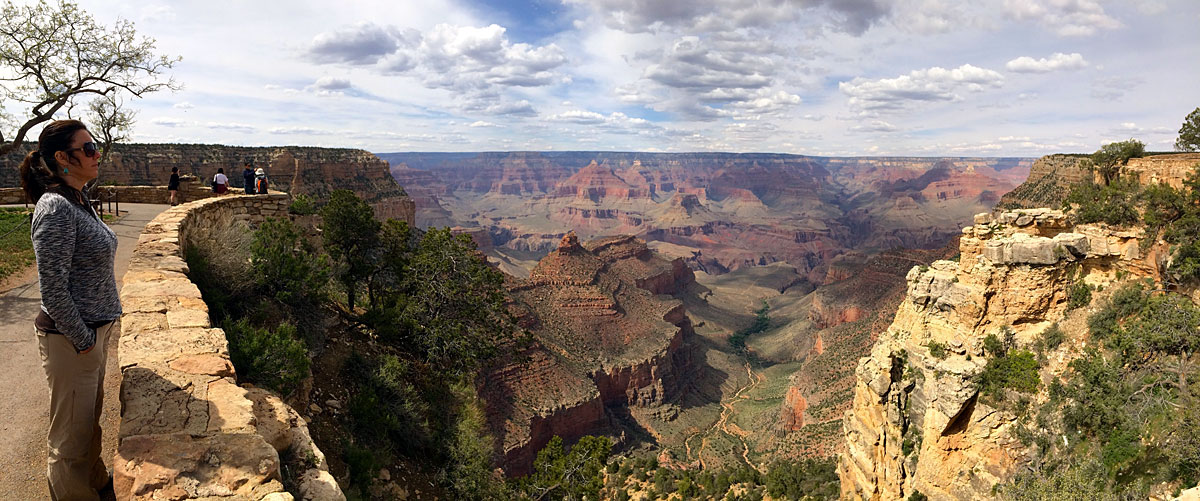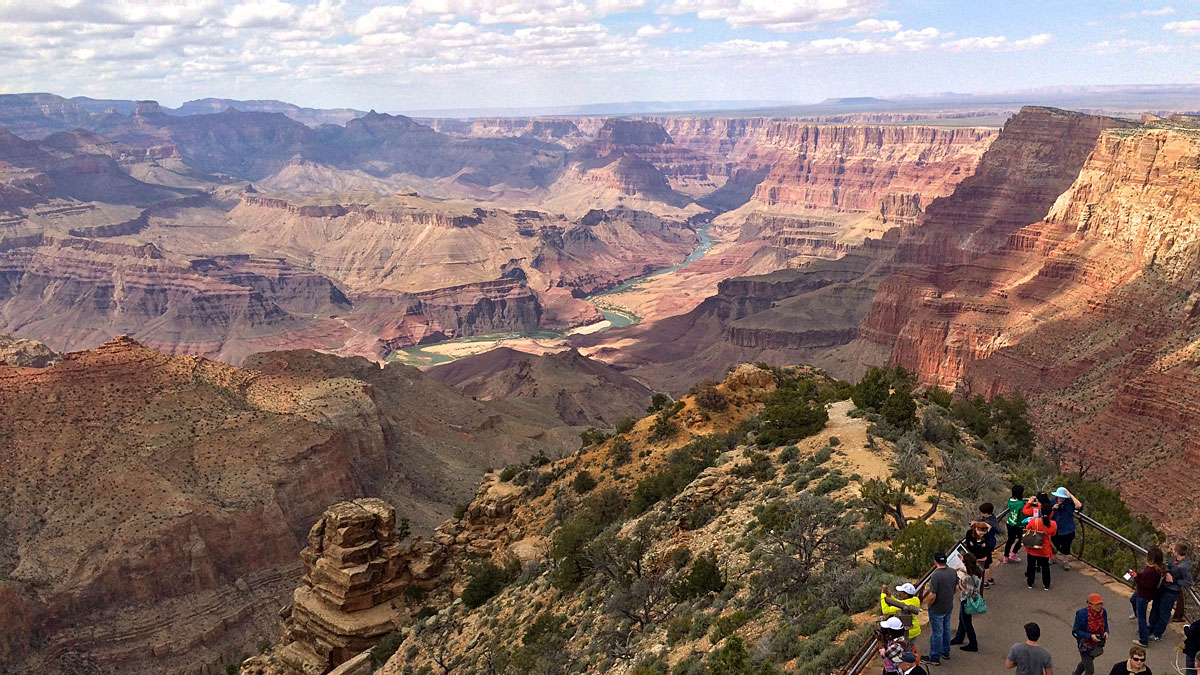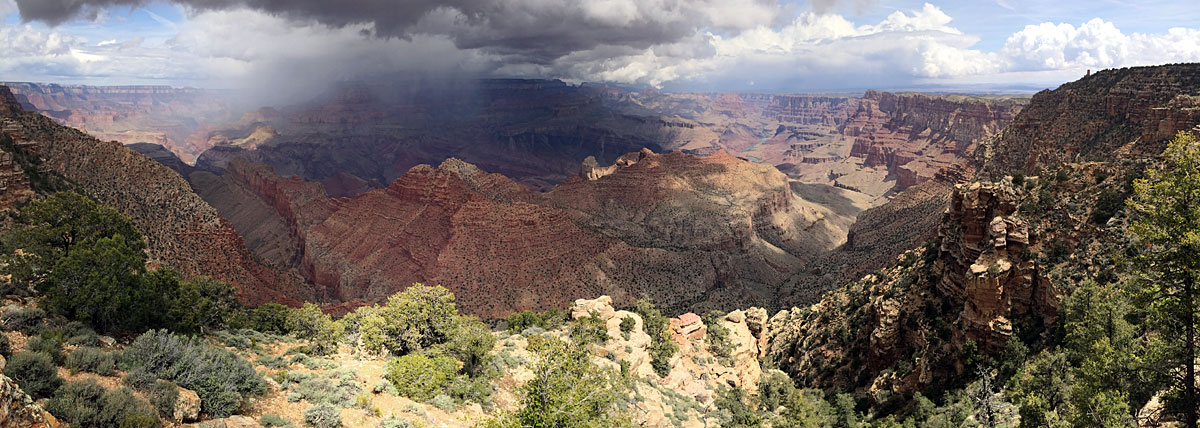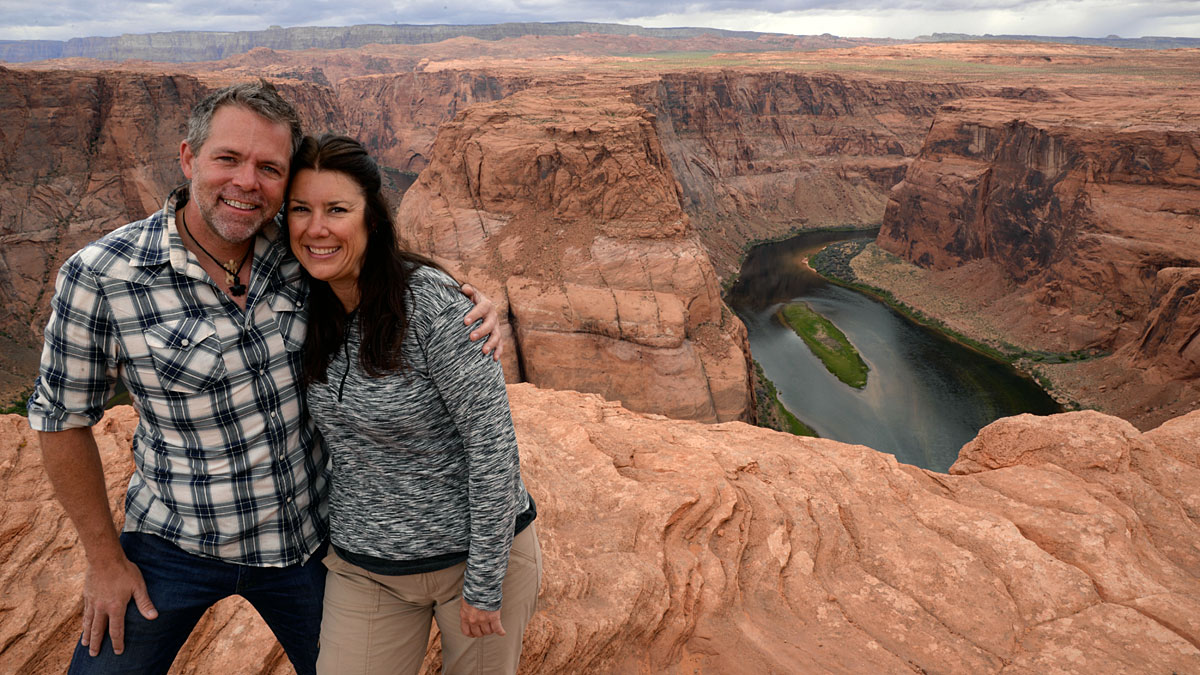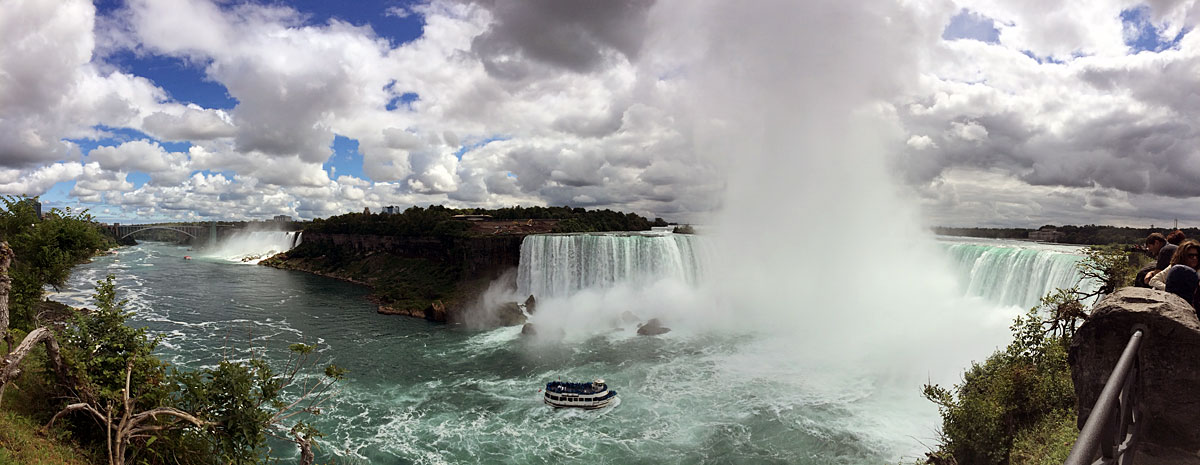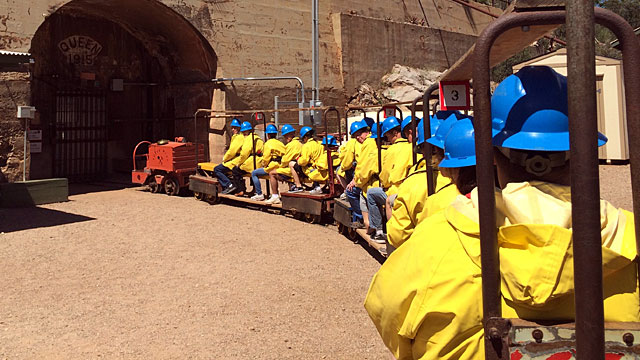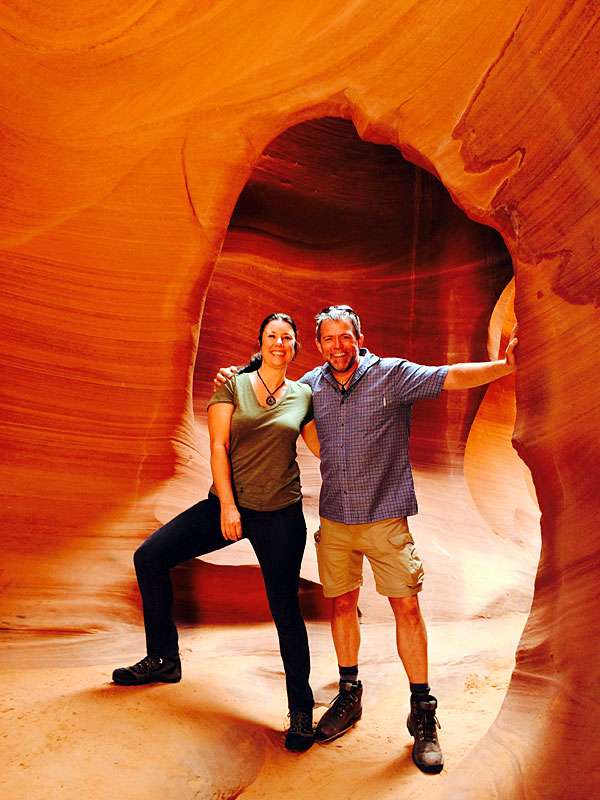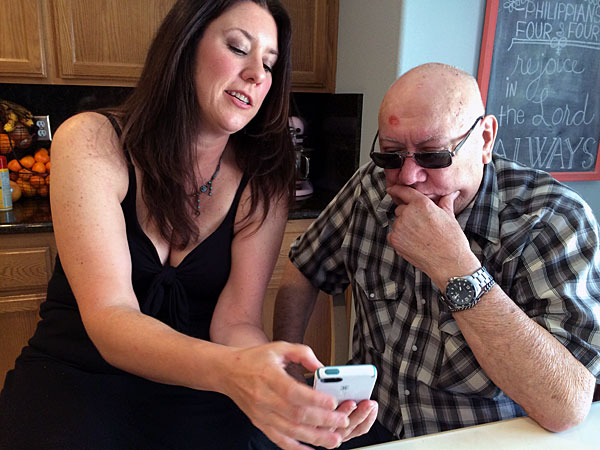This has been quite a year for me. In 2015, I did a couple of Big Things that pushed me outside of my comfort zone. They were scary — but fun. And while my life was mostly awesome, it wasn’t perfect. (It never is, right?) I’ve struggled with my fitness, especially.
By far the biggest event in my life this year was our RV trip across the United States. Kim hatched this plan in early 2014, and after we realized we really wanted to do this adventure, we spent the rest of that year preparing for it. By early 2015, we’d begun shopping for a motorhome and planning for six months of travel. In the middle of January, we bought a used 29-foot Bigfoot for $38,000.

Bigfoot, before the adventure began…
I don’t think I can convey just how nervous it made me to buy this vehicle. Motorhomes combine the worst aspects of owning both houses and cars. To me, making this move felt — and still feels — like a a huge risk. But calculated risks, life lacks zest. (Plus, we have high hopes that we can recoup much of that $38,000 when it comes time to resell the rig.)
Kim and I spent most of February and March preparing for our trip. We arranged for our friends Tyler and Jess to housesit our condo in Portland. We packed away all of our stuff (except our furniture). We outfitted the RV. Kim quit her job — a big leap of faith on her part. We took a couple of weekend test trips to nearby campgrounds.
Then, on my 46th birthday, we drove off for what we expected to be six months on the road.
Things got off to a rocky start. Kim and I don’t fight often, but there was some definite negative energy the morning we left. That bad vibe lingered as we drove south through Oregon and into northern California. But by the time we reached the Redwoods, we were back in sync. With a couple of exceptions, we remained in a good groove for the next nine months — despite being in constant close quarters and having nobody else to hang out with.
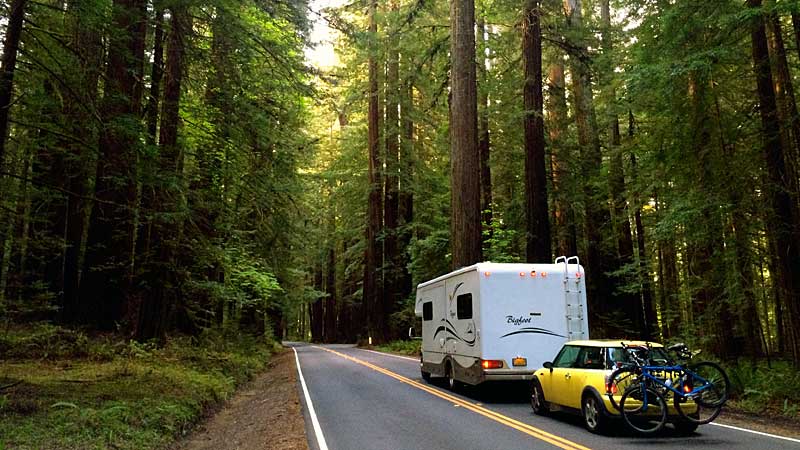
After a week in Wine Country, we moved on to California’s Sierra Nevadas to explore Kim’s childhood stomping grounds. We visited her friends and family. We explored Yosemite.
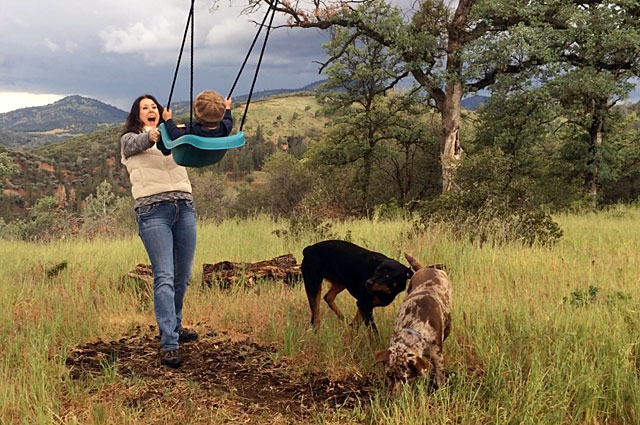
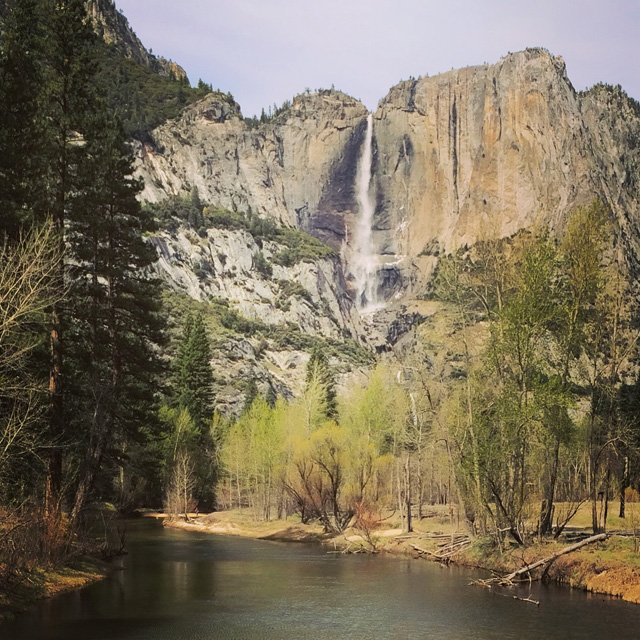
By the middle of April, we’d reached southern California. We parked the RV in Palm Springs for a week, which gave us time to explore the surrounding area. We visited Joshua Tree. We drove around the Salton Sea and through Anza-Borrego. We spent time with more of Kim’s family in southern California.
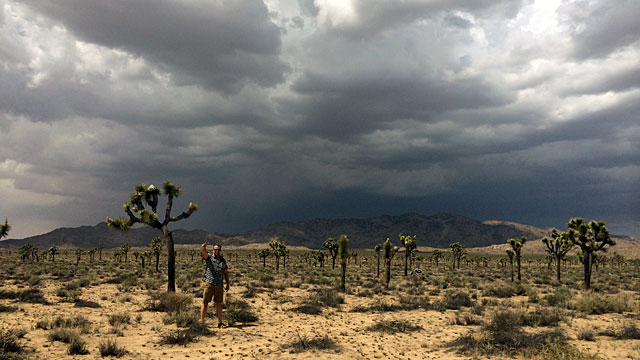
We were lucky to tour the park when it was cloudy and rainy.
The weather added texture to everything.
From there, we moved on to Arizona. Arizona! Wow, what a lovely surprise. The state is absolutely gorgeous.
When she was younger, Kim lived for a year in Flagstaff, Arizona. But at the time, she and her husband hadn’t had the time or money to really explore the region. This time, we spent nineteen days sampling the state from south to north — and still didn’t see half what we wanted to.
We loved the funky charm of Bisbee, the mining town built into the side of a mountain. We enjoyed the hospitality of her aunt and uncle in Tucson. We made a quick pitstop for Chinese Mexican food (yes, really) at Chino Bandido in Phoenix. We spent a week exploring the area around Sedona. We camped for free in the national forest just outside the Grand Canyon.
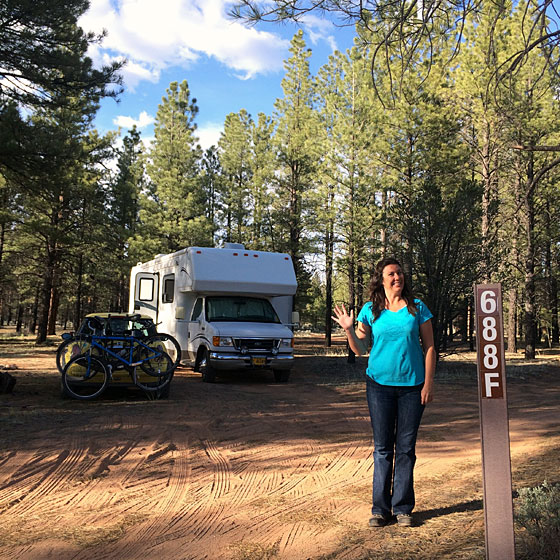
Forest Road 688F, just south of Grand Canyon!
But the biggest surprise of all was probably Page, on the Arizona-Utah border. This town came into existence during the construction of the much-maligned Glen Canyon Dam. It’s surrounded by astounding geologic formations, including the jaw-dropping Horseshoe Bend and the famously photographed Antelope Canyon, both of which are well worth the time and effort to visit.
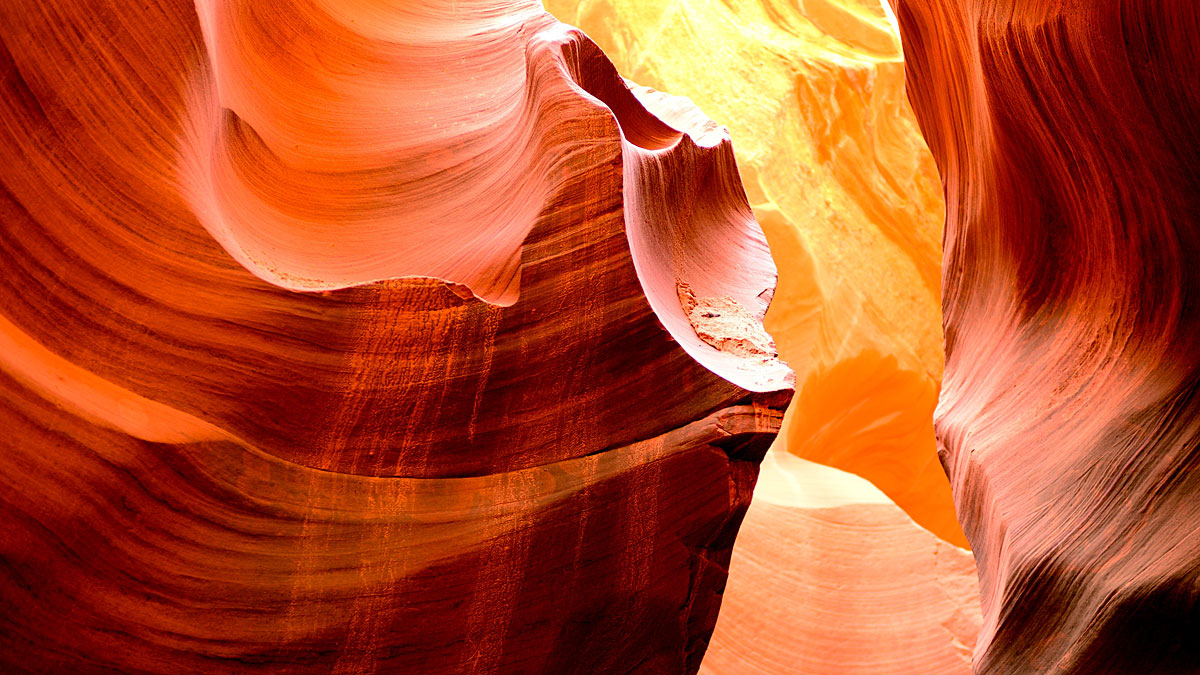
Antelope Canyon is a crazy kaleidoscope of shapes and colors.
Between the two of us, we took over six hundred photos!
After a quick stop at the relatively disappointing Monument Valley, we spent a week in southwest Colorado. Again, more amazing scenery. From the ancient cliff dwellings at Mesa Verde to old mining towns like Silverton and Rico to the fantastic Rocky Mountain peaks around Telluride and Ouray, we loved soaking up the history and the views. Top highlight? Probably the afternoon we spent at the “clothing-optional” hot springs outside Ouray. We spent several hours reading in the mineral pools, getting massages, and experiencing a fantastic thunderstorm.
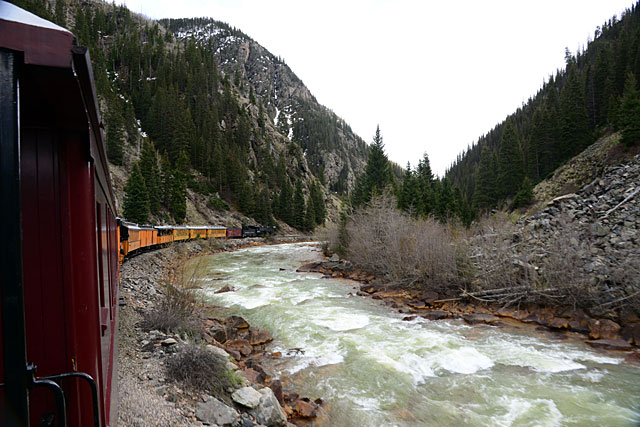
Riding the Durango narrow-gauge railroad next to the Animas River
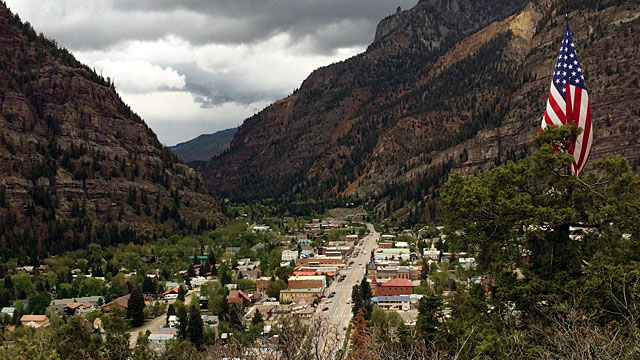
Ouray, Colorado is tucked into the Rocky Mountains

Black Canyon of the Gunnison National Park
From there, we moved on to the Fort Collins area, where we enjoyed ten days with Kim’s mom and stepdad. We biked around the town, ate and drank too much (a theme for this trip), and got to visit with friends like the Mr. Money Mustache family. A great break after the first stage of our trip.

Atop Rocky Mountain National Park

Financial friends in Longmont: Derek and Carrie and the Mustache family.
By early June, we had a feel for how this whole motorhome thing worked. We left Colorado and drove northwest into Wyoming, where we explored Yellowstone and the Grand Tetons for a week. Again, so much beauty! The western United States has some world-class destinations for nature lovers.
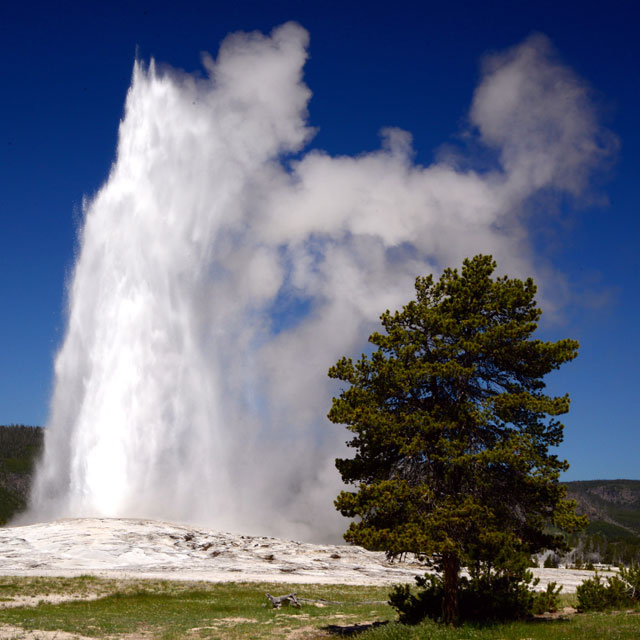
Old Faithful is neat, but Yellowstone offers much more
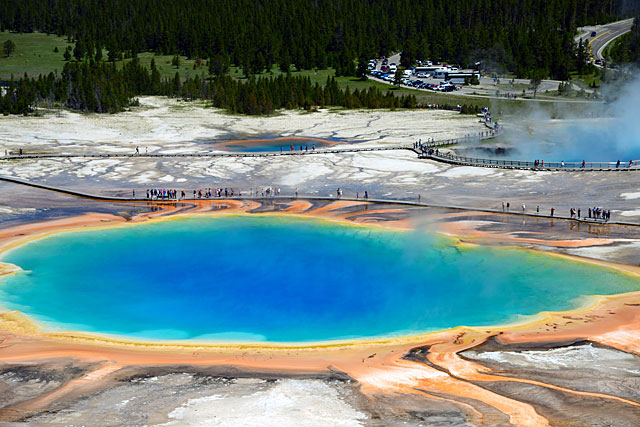
Grand Prismatic Spring is beautiful…
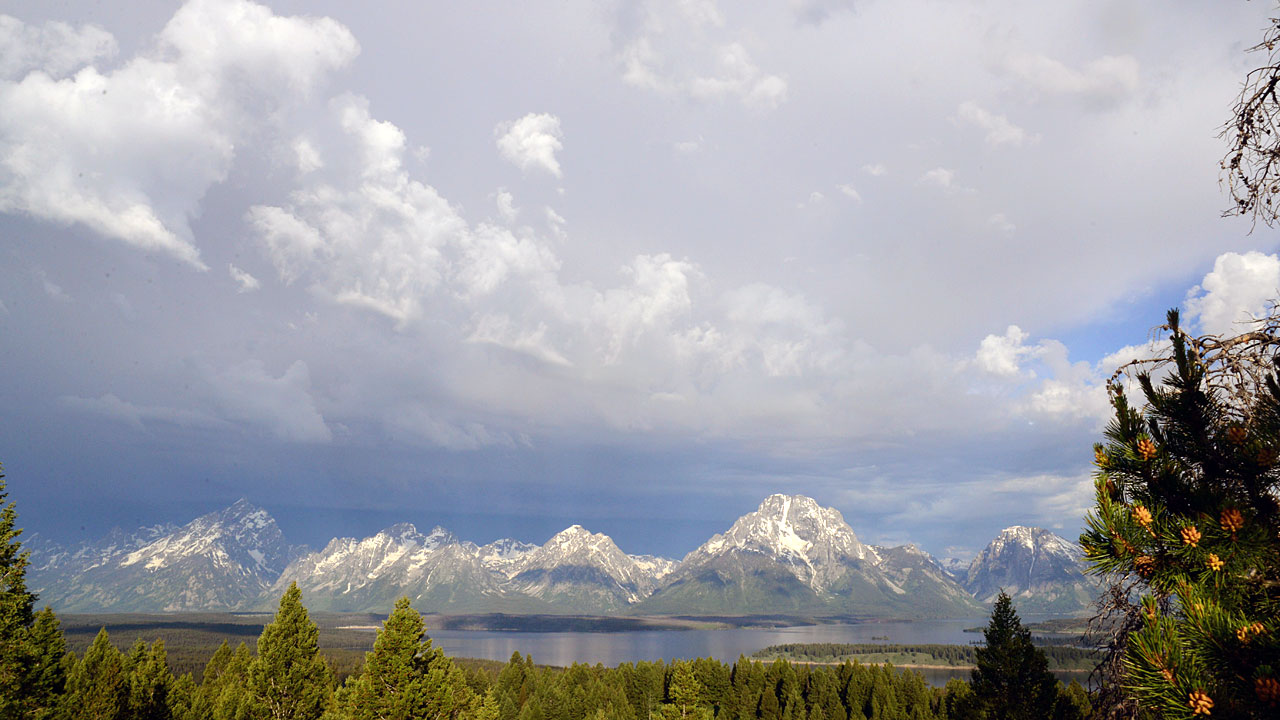
Morning in Grand Teton National Park (photo from top of Signal Mountain)
After a minor mishap on our way to Sun Valley, Idaho — we managed to run out of gas while driving the back way into the resort town — we settled in for a quiet week in a small town.
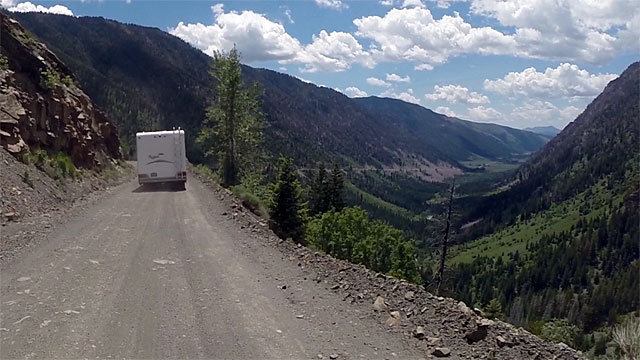
The drop down into Sun Valley on Trail Creek Summit Road
From there, it was north to Montana. The end of June found us camped on the shores of Swan Lake, a great base for exploring Glacier National Park and the surrounding area. We spent a lot of time on the water, basking in the sun — and dodging mosquitoes. (From the time we reached Fort Collins at the end of May until we settled in Savannah in early October, both of us constantly sported bug bites.)
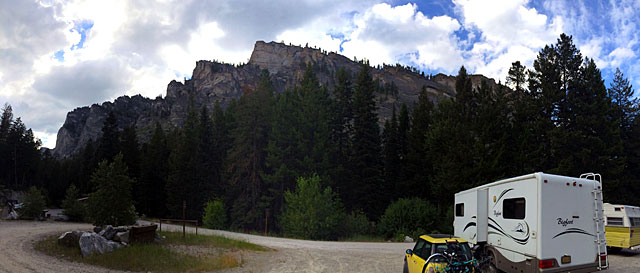
Boondocking at the base of the Bitterroot Mountains.
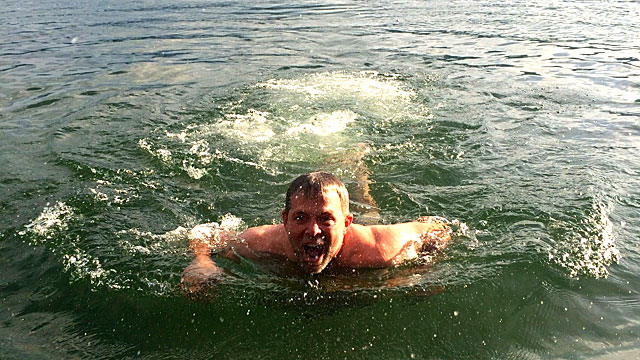
The cold, cold water of Swan Lake in northern Montana

Glacier National Park, as seen from Going-to-the-Sun Road.
The first three months of our road trip had been spent exploring The West, a region we already knew fairly well. (In fact, we had never left a place that Kim did not know.) Now it was time to head into the unknown. Our first stop? The Dakotas. We passed Independence Day in the Black Hills of South Dakota, a wonderful vacation spot.
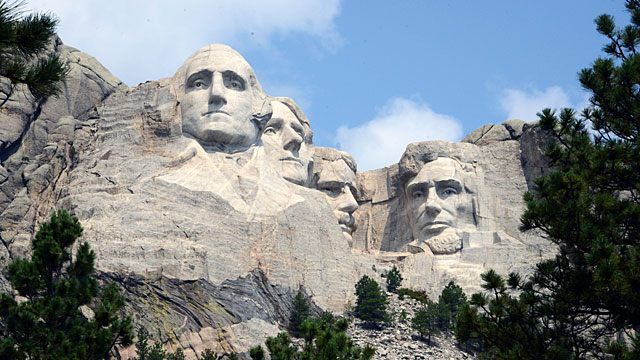
Mount Rushmore would have been neater at the start of our trip. By July we were jaded.
We darted down to Nebraska to visit Kim’s close friends and spent a night parked on the edge of bluff overlooking Badlands National Park (just a few miles from the infamous Wall Drug, perhaps the country’s top tourist trap). Here we reached Peak Mosquito. The nasty bloodsucking menaces were so thick that we could not walk from the car to the RV without getting new bites. Crazy!
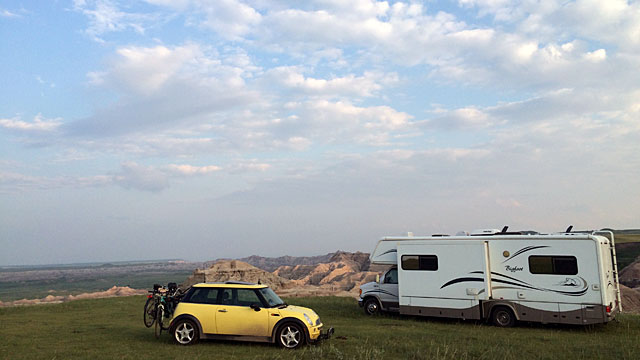
Sitting on the edge of the Badlands…
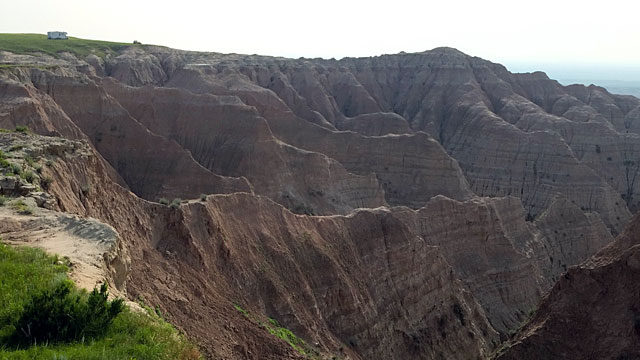
Our best camping spot on the trip if not for the bloodthirsty flies and mosquitoes.
It was here that our troubles began. Driving east toward Minnesota, the motorhome’s engine blew. We found ourselves stranded for ten days in the small town of Plankinton, South Dakota. While the fine folks at Overweg Auto installed a new engine for us, we took the time to visit the home of Laura Ingalls Wilder, see the Corn Palace in Mitchell (meh), and watch a lot of movies on our laptops.
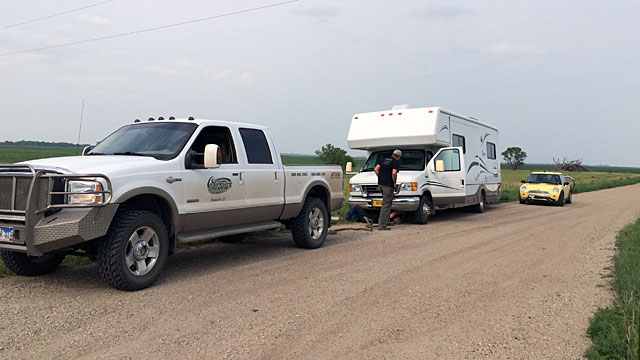
Prepping to tow an injured RV back to town…
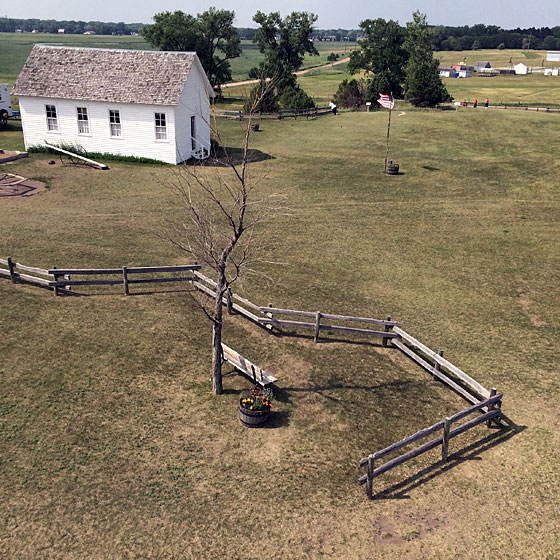
The real-life Ingalls homestead. Laura first met Almonzo in the slough behind this white building.
It was in Plankinton that the seed was planted for my new financial blog, Money Boss. While hosting a financial webinar for my friend Leo Babauta, I realized that I really do love reading and writing about money, and helping others improve their finances. So, after years of saying I was retired, I put the wheels in motion to get back in the game.
With our newly-repaired RV, we got back on the road and tried to make up for lost time. I visited my friends Joel and Aimee who live smack dab in Garrison Keillor country. (Seriously, they live just a few miles from the fictional location of Lake Wobegon.) We parked for a few days near Duluth, Minnesota, where we got out first introduction to what passes for scenery in the East. (Sorry, folks, but it’s not nearly as scenic as the West!)
In the Land O’ Lakes, we started dropping in on friends. We spent a few days with Jim Collins on the shore of Lake Michigan; we saw Shannyn in Chicago (our first real city since Denver two months earlier); we camped for a week near the Amish enclave of Shipshewana, Indiana where we enjoyed the hospitality of Phil and Kathy; we visited Adam Baker’s family in Indianapolis. It was all great fun, but Kim and I were both interested to see that once we had crossed the Great Plains, it was as if we’d entered another country. Again, the eastern U.S. is very different from the west.
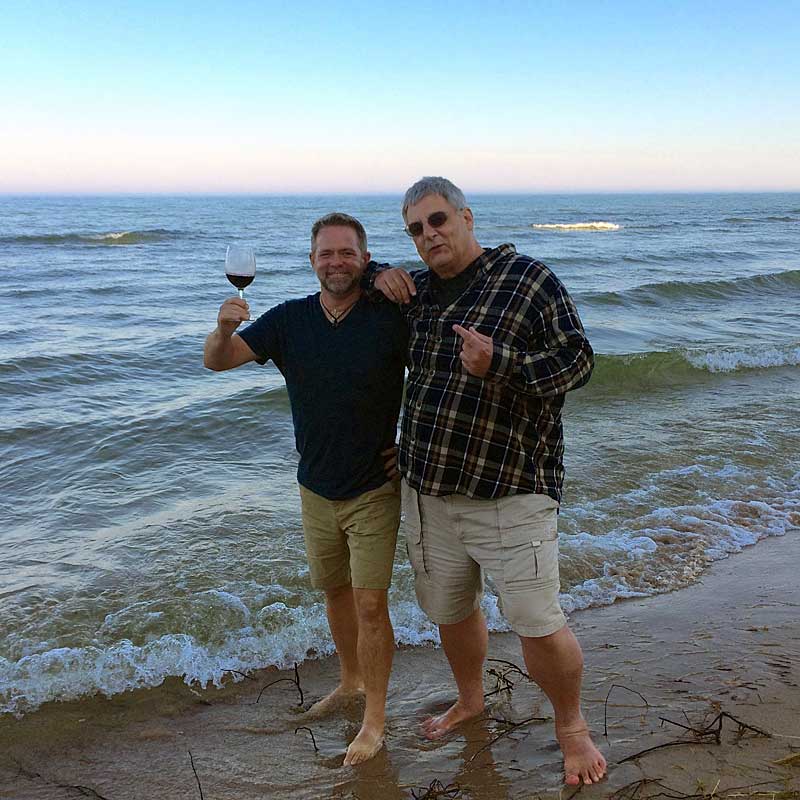
J.D. and Jim, walking the shores of Lake Michigan…
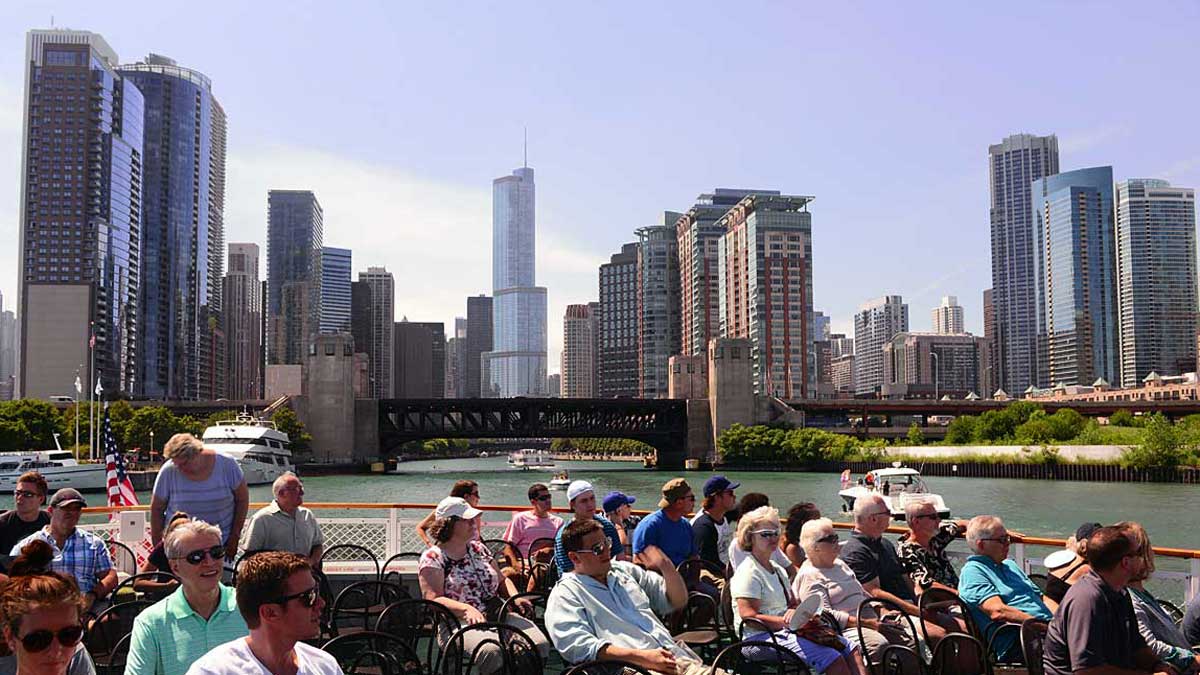
The river tour of Chicago’s architecture is an excellent way to learn about the city.
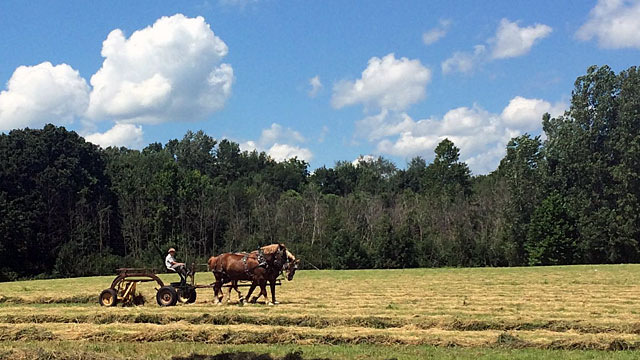
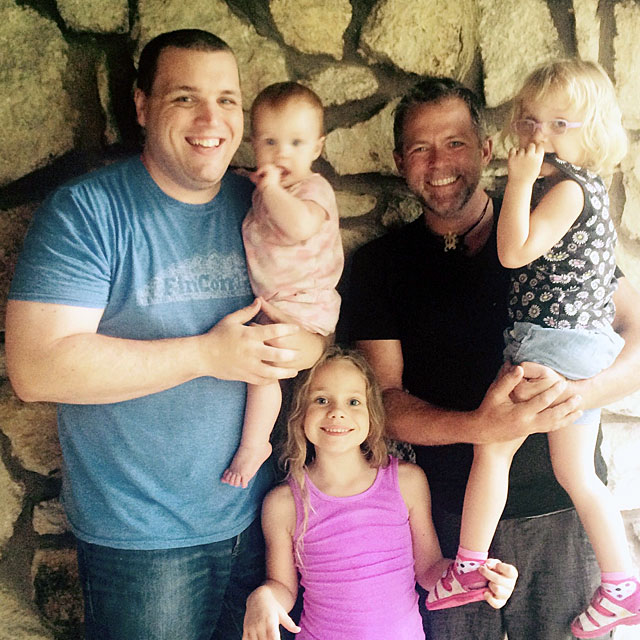
Adam and J.D. and three Baker girls
Next, we moved on to Ohio. We stopped near Cincinnati for four days, where we had three great social experiences. First, we met Chris and Jim (a.k.a. Geeks on Tour). Then we enjoyed a home-cooked meal from Amy Finke. Then we enjoyed another home-cooked meal from Andrea Deckard.
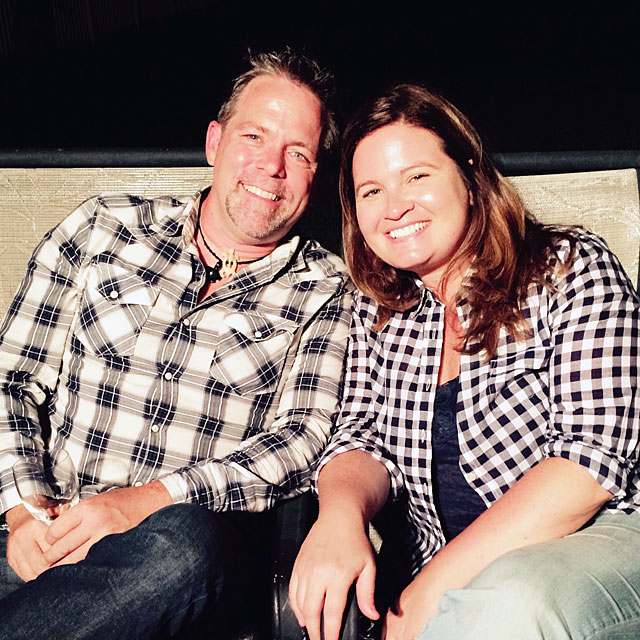
Can you tell how hot and tired Andrea and I are in this photo?
In fact, the 24 hours with Andrea had a profund impact on both Kim and me. Over dinner, she told us about Steve Chou’s course on how to open an online store. Kim has been searching for some way to make money online, and this sparked something inside her. The very next day, she had begun researching how to make this happen. (Unlike me, Kim is not a natural internet denizen. She doesn’t enjoy computer work. This is a whole new world to her.) The next morning over breakfast, Andrea gave me some not-so-gentle prodding to start my new website.
These 24 hours with Andrea completely changed our plans. We’d already realized that this six-month trip across the United States was going to take at least a year, but we’d had no plans to stop. Now, however, both Kim and I became distracted. Instead of being in the moment, enjoying where we were and what we were doing, we were thinking about other things. She was thinking about what to sell online and how to do it. I was drawing up plans for Money Boss.
Thanks to Andrea, everything changed on August 14th.
We left Cincinnati and drove deep into West Virginia, a state of mountains and trees. Although this was probably the most beautiful place we’d seen since Arizona, neither of us was fully engaged anymore. Instead of exploring the world around us, we were spending time in the motorhome, working on our projects.
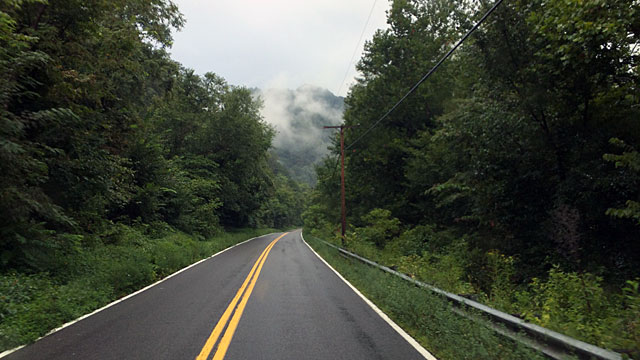
The lovely misty mountains of West Virginia…
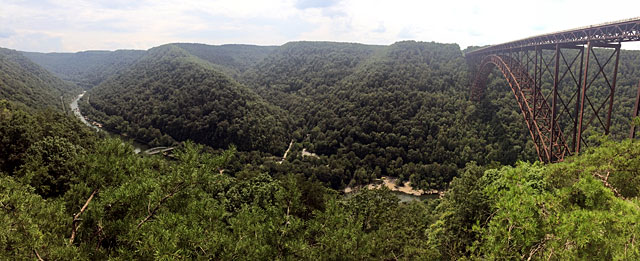
For the next two weeks, we tried to explore the places we visited. We took a tour of the West Virginia State Penitentiary. In Cleveland, we took a day to ride the roller coasters at Cedar Point. We also visited the Pro Football Hall of Fame (very disappointing) and the Rock and Roll Hall of Fame (better than expected — great, in fact). We parked the RV at a winery in northwestern New York (dangerous!) and biked around Niagara Falls. (So far, Niagara Falls has been the most impressive geological feature we’ve seen in the East. It’s pretty neat. If it were in the West, it’d be a National Park.)
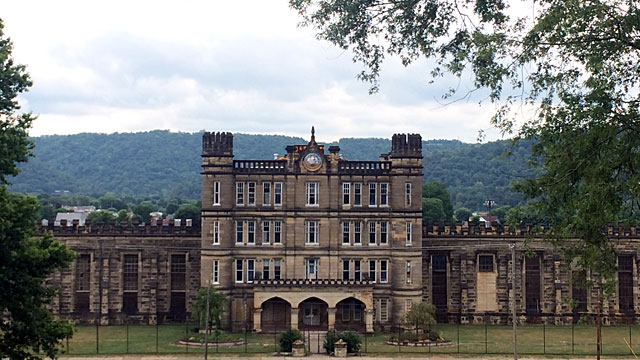
The penitentiary building, as seen from the mound across the road…
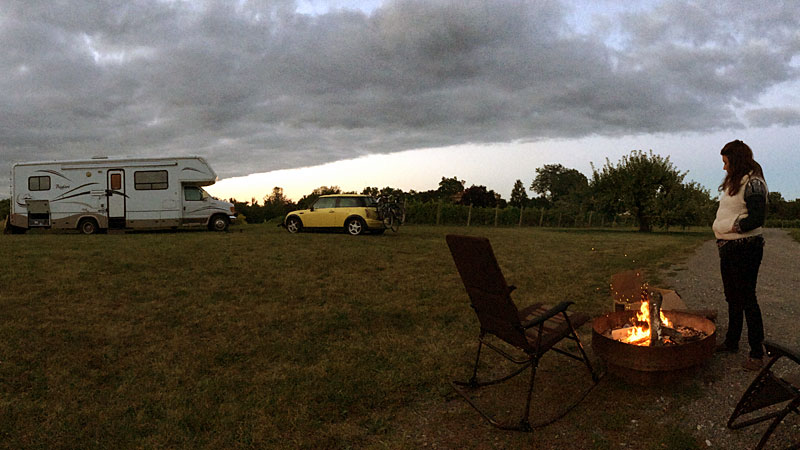
Our RV spot (and fire) at Freedom Run Vineyard
As a sign of how much we’d lost our enthusiasm for the trip, we skipped New York’s Finger Lakes, a region we’d been looking forward to visiting. We did stop in Cooperstown, home of the Baseball Hall of Fame (again, underwhelming). This area was far more beautiful than we’d expected. We both thought we could live here.
While the next two weeks weren’t miserable, they were certainly the least enjoyable two weeks of the trip. We spent four days in Pennsylvania’s Poconos, a place I’d always thought was some sort of resort get-away. Turns out it’s a dirty over-commercialized tourist trap. Then we spent ten days in an RV park near Atlantic City, New Jersey. We ventured outside the motorhome only rarely. Instead, we cooped ourselves up inside and worked on our projects. By this time, my plans for Money Boss were in full swing. Meanwhile, Kim was receiving a crash course in internet marketing.
We did take time for two visits, however. Our friend Harlan drove out to see us one afternoon. And my little brother Tony happened to be in town for a business convention (which was why we’d picked Atlantic City as a stop in the first place), so we spent a day with him. It was awesome to see both guys.
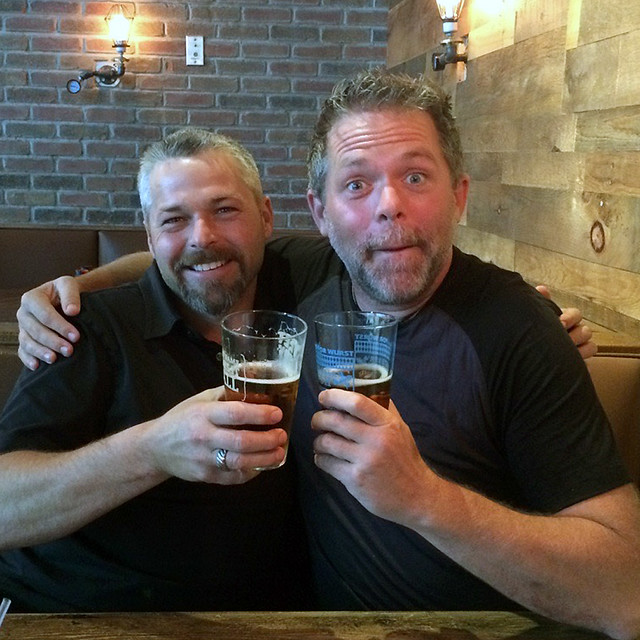
Brothers with beer.
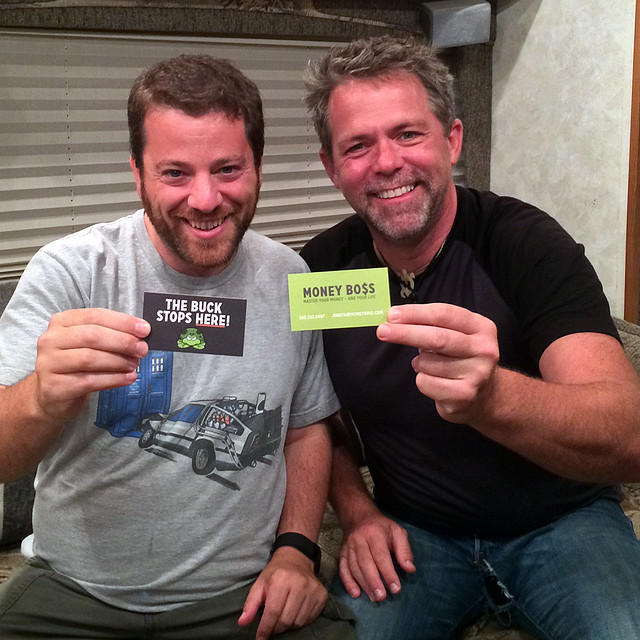
Business buddies.
After Atlantic City, we parked the RV at Jim Wang’s house outside Washington, D.C. We drove the Mini Cooper to Charlotte, North Carolina to attend two conferences: Digital CoLab and Fincon. This week with friends and colleagues energized both of us, and reinforced the idea that it was time for us to take a break from our travels.
But where should we stop? Where would we live? What would we do with the RV? How long would we stay put? What would we do for money? Is it possible to simply set down roots all of a sudden with no plan, no preparation?
Turns out, it’s surprisingly easy to do so.
After exploring Charleston, Savannah, and Orlando, we decided to settle in Georgia for six months. We rented a fully-finished condo in Savannah for six months and settled into a routine.
During October, Kim and I were both good about exercise. We’d gained weight from too much food and drink (and not enough exercise) during our six months across the U.S., and we aimed to fix that. At the same time, we both dove deep into our businesses. Kim ordered lots of different products from China to test their marketability online. I worked on content and design for Money Boss.
In early November, Kim’s brother flew out to visit us for a long weekend. We played tourist in Savannah and had a great time trying restaurants and touring the historic sites.
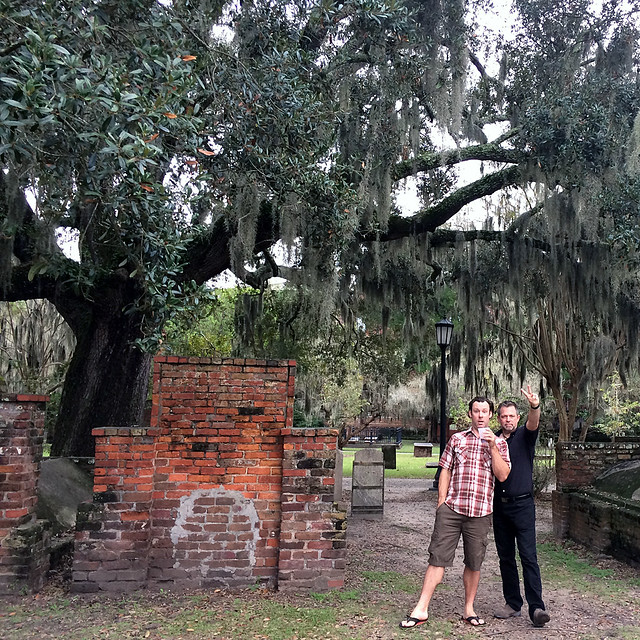
Doing the tourist thing with Kim’s brother, Doug.
After Doug’s visit, I reverted to bad habits. You see, if I’m not careful I can become a workaholic. And that’s what I did. I spent the entire month with my head down in front of my computer. I stopped going for walks. I stopped lifting weights. All I did was work. In some ways, this was productive. I created an excellent (IMHO) ten-part series that summarizes my financial philosophy. And just before Thanksgiving, the Money Boss website went live!
On the other hand, all work and no play makes J.D. a very dull boy. I lost my fitness gains from the month before. And after getting into a good groove with my writing, I fell into a mental funk. The first couple weeks of December weren’t good.
Kim, on the other hand, was a machine. She was exercising. She was working on her online business. And most impressive (to me) was the fact that she had hustled to get her Georgia state dental hygiene license, distributed her résumé to offices around town, and now was picking up all sorts of fill-in work. Her hustle is amazing.
While we’d settled in Savannah, we continued to explore our surroundings. For Thanksgiving, we drove to Orlando to spend the holiday with our friend Toni and her family. We also spent a night in St. Augustine, Florida, the oldest European settlement in the U.S. (We’re heading back to St. Augustine in a few days to help celebrate Toni’s birthday.) In early December, we drove two hours north for a weekend in beautiful Charleston, South Carolina.
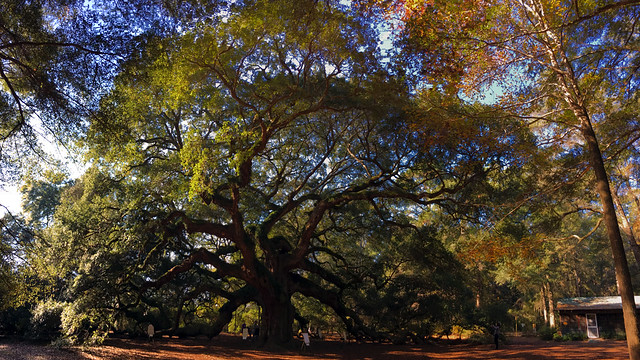
The massive Angel Oak is a Charleston landmark.

The ruins of the Old Sheldon Church between Charleston and Savannah.
To end the year, we booked a week in New York City. Kim had found a Groupon for a cheap hotel near Times Square. (The place? The very European Row NYC, where rooms are small and functional because you should be out enjoying the city.) We flew up for Christmas week and had a blast. The highlight was an evening with blogging buddies Harlan, Miranda, and Athena. (Trivia: We’ve now seen Harlan and Miranda each three times on this trip, the most we’ve seen anyone.)

The Statue of Liberty.
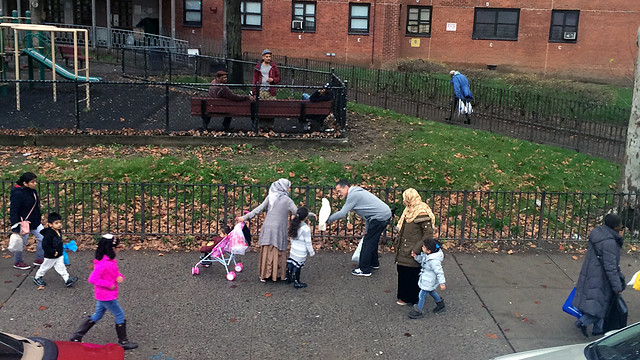
On the street, somewhere near Harlem.
As I say, it’s been quite a year. When we think about it, Kim and I are blown away by how much we’ve done in the past twelve months. Seriously. With zero experience, we bought a motorhome and launched on the adventure of a lifetime. We explored half the United States. We settled in a new city (if only for a few more months) and both started big new projects. Through it all, our relationship has only gotten stronger, which is something that wasn’t a given. (Many folks find that RV living harms their bond rather than helping it.)
That said, our health has suffered. We’ve enjoyed trying the food (and beer) from around the country. Our bellies are good barometers of just how much that’s true. We’re not worried, though. We know we have the drive and ability to shed the weight once we establish some sort of routine. Unfortunately, that might mean when we return home — next October.

Where we’ve been in 2015. So many places!
What next? Well, Kim will continue doing fill-in dental hygiene work in Savannah. She’s shocked by how well this has gone. People love her, both patients and dental offices. She has more offers of work than she has days in the week, and she’s getting more all the time. (She’s even getting calls from offices she never applied to; folks are referring her to each other!) Meanwhile, she’s about to place her first order for product from China. She’ll be selling teething necklaces (!?!?!) on Amazon.

Our kitchen table is filled with Kim’s ecommerce stuff.
My work is focused solely on Money Boss. Now that the site is live, and now that I’ve finished writing my ten-part “crash course” to my financial philosophy, it’s time to settle into a writing routine. The challenge? I not only need to produce articles for now, but also articles for when we’re on the road. Once we resume our RV trip, I want to devote my efforts to that. I don’t want my attention to be divided. It takes the fun out of things. That means I have to create twice as many articles (or three times as many articles) as I need for the immediate future.
Fortunately, I have tons of ideas. Plus, during my years of “retirement”, I saved up lots of notes and half-completed stories. I shouldn’t have any trouble coming up with new stuff to write. (First up? Tomorrow — on New Year’s Day — I’ll write my article for April first. It’ll be an update of a GRS classic: Lifestyles of the Rich and Stupid. Very eager to write this one.)
We plan to take a two-week trip through Florida at the end of February and beginning of March, but other than that we’ll be camped here in Savannah until it’s time to hit the road again. After the huge St. Patrick’s Day celebration — the biggest such event in the U.S., bigger than New York or Chicago! — we’ll start packing up the motorhome. Our plan is to hit the road by the time the lease on the condo expires on March 31st.
We’re not sure what route we’ll take. We skipped some places we wanted to see when we got burned out at the end of the summer. But we don’t want to drive all the way up to New England. (I’ve promised Kim that I’ll fly us out to see the fall colors in 2017.) We’ll probably start in Washington, D.C. (Maybe we can park the RV in Jim’s driveway again? Or maybe we’ll drive the Mini Cooper up and rent a cheap hotel? AirBNB?) From there, we want to explore the South.
We know we want to hit Kentucky in late April or early May. Kim wants to see horse races! We want to see Nashville and Memphis. I have a college roommate in Huntsville, Alabama and I’d love to reconnect with him. Kim has never seen New Orleans, and she really ought to do so. Our friend Bret will kill us if we don’t spend a week in St. Louis. I have a cousin in northern Oklahoma. The state of Texas is h-u-g-e and might take an entire month to explore. Kim wants to see New Mexico, and we’d both like to visit her mom again in Colorado on the return trip. Plus, there’s Arizona. Arizona! We want to see more of what that state has to offer.
Our only real timeline is that we have to be in San Diego for a conference in the middle of September. (I’ll fly home to Portland for World Domination Summit in August, but that shouldn’t affect our travel schedule.) After that, we’ll drive north to Portland. We should be home in early October. We can’t wait! The U.S is amazing, but Portland is home and we miss it. And we miss our friends. Our only other plan for 2016 is a trip to Ecuador for the fourth annual chautauqua on money and happiness.
So, there you have it. A busy and blessed 2015 with more to come in 2016. If I could get my eating and drinking under control, my life would be pretty much ideal. I hope your life is similarly wonderful, and that you and I will continue to become better people together as time goes on.


